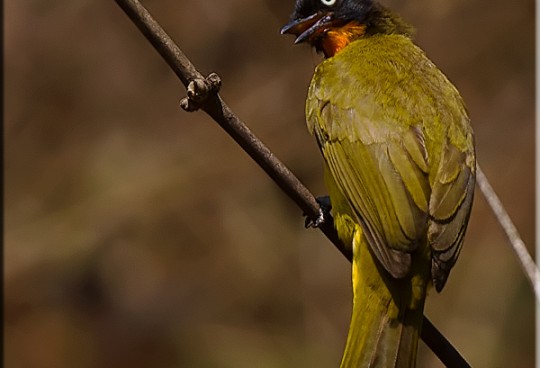The Malabar grey hornbill (Ocyceros griseus) is a hornbill endemic to the Western Ghats and associated hills of southern India. They have a large beak but lack the casque that is prominent in some other hornbill species. They are found mainly in dense forest and around rubber, arecanut or coffee plantations. They move around in small groups, feeding on figs and other forest fruits. Their loud cackling and laughing call makes them familiar to people living in the region. The Malabar grey hornbill is a large bird, but mid-sized for a hornbill, at 45 to 58 cm (18 to 23 in) in length. It has a 23 cm (9.1 in) tail and pale or yellowish to orange bill. Males as seen in this picture has a reddish bill with a yellow tip, while the females have a plain yellow bill with black at the base of the lower mandible and a black stripe along the culmen. They show a broad whitish superciliary band above the eye, running down to the neck. They fly with a strong flap and glide flight and hop around heavily on the outer branches of large fruiting trees. They have brown-grey wings, a white carpal patch and black primary flight feathers tipped with white. The Indian grey hornbill, which is found mainly on the adjoining plains, is easily told apart by its prominent casque, and in flight by the white trailing edge of the entire wing. The Malabar grey hornbill has a grey back and a cinnamon vent. The long tail is blackish with a white tip, and the underparts are grey with white streaks. The long curved bill has no casque. Immature birds have browner upperparts and a yellow bill. Young birds have a dull white or yellow iris.
The Malabar grey hornbill mainly feeds on Mainly fruit and berries, particularly figs; also insects and lizards; rarely, flowers. It is not globally threatened and is classified as least concern by IUCN. It is a Restricted-range species present in Western Ghats and is considered a western ghat endemic. Reported to be declining in N part of range, and generally vulnerable to clearing of forest and habitat loss.
![]()






Sorry, the comment form is closed at this time.